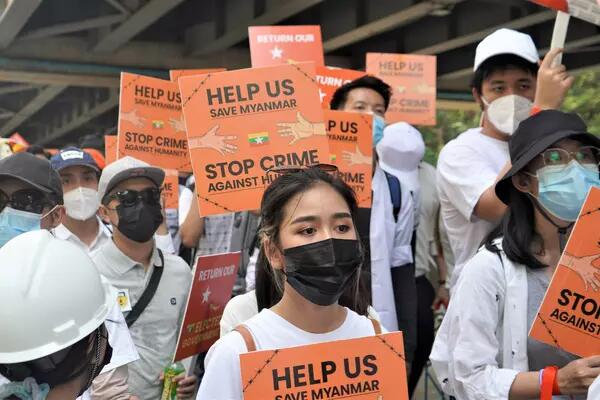Shari Eli is the director of the People's History Lab, the Public Policy undergraduate program, associate professor at the Munk School of Global Affairs & Public Policy and in the Department of Economics. Her research is focused on the intergenerational persistence of welfare receipt as well as the ways in which individuals of low socioeconomic status use cash transfers to improve their lifetime health outcomes.

Welcome to the Munk School. What drew you to this opportunity?
Thank you! I’m delighted to be newly appointed. I was drawn to the Munk School in large part because of the School’s commitment to being wholly engaged in the production as well as the dissemination of new policy-oriented research.
My own research focuses on social programs that help alleviate poverty, particularly welfare programs that allow low-income individuals to have more years of schooling, earn higher income in adulthood and, hopefully, to live longer or to face fewer disabilities in adulthood.
One of the projects that I recently began explores the intergenerational transmission of welfare receipts in Ontario. For example, if your mother or grandmother collect welfare, what are the chances that you will as well and why is it that we see persistence in receipt? Peter Loewen, the Munk School’s director, was instrumental in helping me organize conferences with research directors in the provincial government to convince them to provide provincial level individual records. As a result, my co-author Laura Salisbury (York University) and I have gained access to welfare and disability records in Ontario from 1936 all the way to the present. With funding from the Social Sciences and Humanities Research Council (SSHRC), we digitized data on families spanning back as many as five generations.
Economics research of this sort has value to the public and especially to policymakers as they grapple with ways to alleviate poverty in the face of growing income and wealth inequality. In the instance of Laura and my work, we will learn about intergenerational mobility for female populations, as most welfare recipients are women. Previously, the literature was focused on men as they were the main income earners in the household and easy to track in records over time since they are unlikely to change their last names upon getting married – while women do. For the first time, there are new opportunities to do research focused on women because there are efforts by researchers and policymakers to link women over time and across records.
What kind of questions do you ask and what patterns have you uncovered through your research on assessing welfare use from generation to generation?
My research is focused on the long-term effects of receiving welfare or other government assistance. For instance, cash transfers — when one receives cash from the government because they’re in need. Other interventions could include job training programs for example. In all cases, I am interested in learning about long-term outcomes. With regard to the job training programs, what I’m interested in is asking the following: if you participate in a jobs program and you learn skills that might be useful in the job market, what would your income be five or 10 years after the program relative to the person who had the same initial circumstances but couldn’t participate in the job training program? And more importantly for someone with interests in health and demography, do you live longer as a result of the job training program because you have higher income in adulthood or a better social network? So, do you face fewer health issues in adulthood if you earn more money? Is your pension higher? Are you more likely to live in a city or in a rural area? I want to have a better understanding of how one’s whole life trajectory changes as a result of programs that aim to alleviate poverty.
In order to study the lifetime outcomes that result from social programs, I must look to the past and study cohorts that have already lived out their lives. This is why I study historic social programs – we have the benefit of knowing how it worked out for these populations.
What kind of samples from the past have you studied? And at its core, what was the outcome?
In the case of my work on jobs programs, my co-authors Anna Aizer (Brown University), Guido Imbens (Stanford), Keyoung Lee (Philadelphia Federal Reserve) and Adriana Lleras-Muney (UCLA) and I used case files of men who served in the Civilian Conservation (CCC) between 1933-1942. These men were aged 17-25 during the Great Depression, and many of them came from farms that had been hit by the Dust Bowl. These were the very poorest men in the United States, who faced unemployment rates of around 60%. From the case files, we digitized names and dates of birth which we linked them to population census records to determine their income earned in adulthood and educational attainment. So, for instance, we found how much they earn at age 30 when they were in the labor market. Then, we linked them to retirement records using their Social Security Numbers, which were found on the case files or from links that we made to other administrative records kept by the Social Security Administration. We also linked the men to death records. In putting this information together, what we found is that the short run effects of joining the CCC were modest. The program didn’t provide these men a higher chance of being employed a few years after the program, nor did they help them earn a whole lot more money relative to a person who didn’t go or only went for a very short amount of time. What it did do is extend their years of life. The men who served in the CCC for longer were also more likely to have a higher pension and faced much lower rates of disability in old age.
These were the big lifetime effects. Some of the gain from these programs weren’t actually in the skills learned from the classes taken, but rather in building a sense of camaraderie by being amongst similar people — reducing feelings of isolation and finding peers who faced the same thing. Perhaps most importantly, alleviating poverty for this population meant having consistent access to quality food. What we saw among these men in the short run, when we looked at BMI and height measures, was that they grew even though they were already over age 17. This is unusual in many populations and shows that they faced food scarcity before joining the program. Part of the effect of poverty reduction is having access to better nutrition, feeling better — both physically and psychologically — and having stability.
You did a study on income and chose Union Army soldiers as a sample. Why did you choose that specific group?
I was really interested in learning about what effect income had on health in adulthood and on length of life. To do this, I needed a population for which I had information on health in adulthood — specifically physician reports on each individual in the sample to measure health status. There was almost no population with records like that except if you looked to the U.S. military and specifically to Union Army records — men who served in the U.S. Civil War from 1861 to 1865. Since these veterans were required to undergo medical exams in order to qualify for their pensions after the war, the Union Army data contain detailed explanations from physicians about every illness that Union Army veterans faced during life. Therefore, these records presented a great opportunity to look at the effects of income on health while abstracting from the impact of public health interventions (like vaccines) and medical advancements (like antibiotics). The Union Army veteran population was ideal because these veterans lived during a time period of very few public health interventions and in which medical doctors could do very little to cure or treat patients.
In the follow-up project with Trevon Logan (Ohio State) and Boriana Miloucheva (Princeton), I looked at how doctors made character and personality assessments of veterans during exams and how these assessments influenced the pensions that veterans received. For instance, I looked at how Black veterans were discussed in physician reports relative to white veterans and found that these Black veterans were 15 times more likely to be called “ignorant” and over 100 times more likely to be described as “illiterate” relative to their white counterparts. Since physicians had so much discretion when certifying veterans for disabilities that decided eventual pension amounts, physician bias led to Black veterans to be disbelieved during exams and awarded smaller pensions, even when they were just as deserving. Ultimately, these reduced pensions led Black veterans to have reduced quality of life, more diseases of poverty and shorter life spans. Racial discrimination amongst doctors did not end with the Civil War veteran cohort. We still see these practices today. There are still these gaps that tie into the idea that the pain and illnesses of minority groups aren’t always believed when reported. In this way, medicine is still racialized today but it is harder to observe because physician reports for living individuals remain confidential.
How can history help us solve major problems that we are facing today, especially economic ones?
Economic history research often reminds me that human populations are resilient. I think this is something that perhaps we forget when we are in the midst of major crises – such as the COVID-19 pandemic.
A significant part of the literature in economic history over the last 20 years has focused on historical health shocks, such as the 1918 flu pandemic with special focus on the long run effects. For instance, we can look at the effect of being in utero during the flu pandemic on lifetime outcomes, including wages, education and chance of incarceration. Doug Almond has a seminal paper on this topic from 2006. What he shows is that there is a difference in outcomes when you look at the cohort that was in utero during the flu, and you compare them to of the cohort just before and just after. The idea is that the cohort born just before and just after the pandemic were identical to the flu cohort in all ways except being exposed to the flu itself. By looking at the difference in outcomes between the flu cohort and the surrounding cohorts, we can make causal claims about the effect of having the flu in utero on long run outcomes. What’s interesting is that the difference in outcomes is stark and you don’t need to have a good understanding of statistics — you can see it right in the scatter plot graphs.
Papers like these on the flu pandemic raise many questions. For instance, you might start to wonder how populations without access to flu vaccines or other modern medicines manage during health crises. A part of the recent economic history literature as focused on the ways in which populations have become healthier over the last 300 years, and the answer is not just because of public health interventions or medical innovations. This is something that isn’t really appreciated. For instance, tuberculosis was an illness treated by antibiotics, which was not available to the public until 1945. But if you look at plots of tuberculosis deaths from 1900 to the present, the year-by-year drop is linear — there is no big drop right in 1945 when antibiotics become available. Looking prior to that, death from tuberculosis had been trending downward since 1800 in places like Canada, the United States, the United Kingdom and all the countries that today we think of as ‘wealthy.’ How can that be explained? You might think, ‘well, once you understand how tuberculosis spreads, once you understand how germs spread, you can start quarantining people.’ But we see tuberculosis deaths drop even before germ theory of disease is understood and accepted (around the 1890s). What explains the drop?
Even before people understand how tuberculosis spreads, there are sharper drops in the death rate during the eighteenth and nineteenth century. The explanation is that economic growth, rising incomes and rising living standards are what drove tuberculosis and death downward. This is because with more resources and higher income came access to more calories per day, better quality food, the ability to rest when needed and the ability to retire instead of working right up until death.
Rising living standards that result from increases in individual income are the largest contributor to our overall health as a population. When we consider health crises today, especially COVID-19, the benefits of cash transfer programs — in which the government provides individuals with cash and trusts them to put it to good use – become very clear. In this way, alleviating poverty is one of our best defenses against large scale health crises.
What are you most looking forward to during your time at the Munk School?
I love how the Munk School is interdisciplinary and brings in researchers from all over the University that are interested in policy issues and global affairs. I’m really looking forward to learning about interdisciplinary research practices as well as dissemination of research output from my colleagues.
On that note, I'm excited to see how the Public Policy undergraduate program is growing and is expected to continue growing. We are living through a series of very important moments in history — many of which demand new and innovative policies in the public sector. Given the research interests of scholars at the Munk School as well as their commitment to public engagement, we are ideally positioned to continue the expansion of our Public Policy program and training of new students. In the coming years, the curriculum of the program will be ever more focused on the critical issues of our time, while providing students with core principles from political science, economics and related social science disciplines. Undergraduates will have more opportunities to pursue interdisciplinary coursework in order to approach policy issues with a knowledge base that has both breadth and depth. I’m thrilled to be part of a group that is trying to make an impact and look forward to producing work that can be of public service.



